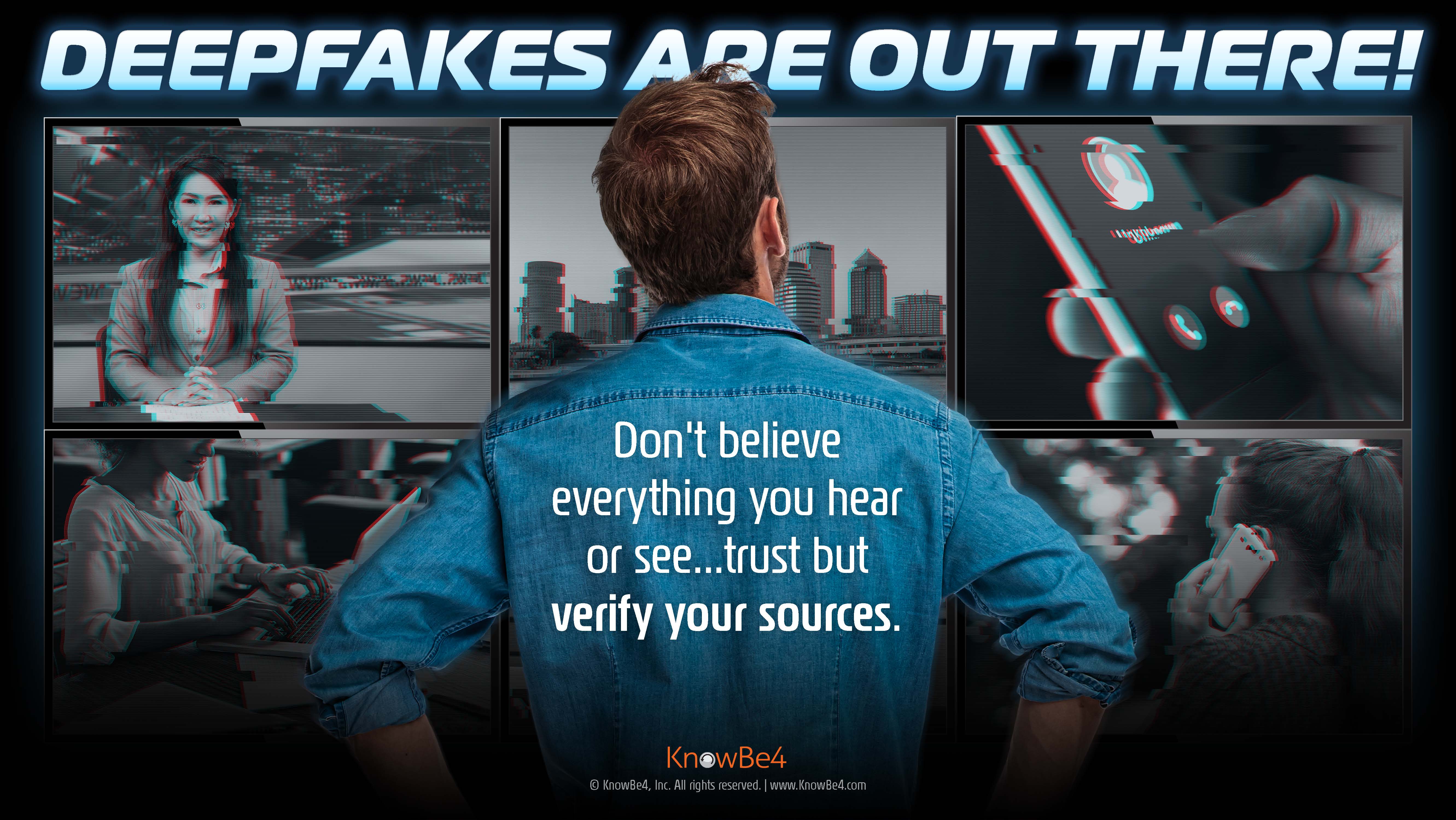The Cyber Corner
Deepfakes: How do they work and what are the risks?

What are deepfakes?
Deepfakes are a type of synthetic media that use artificial intelligence (AI) techniques, particularly deep learning algorithms, to create highly realistic and often deceptive videos, audio recordings, or images. These AI-generated media typically involve the manipulation of existing content, such as replacing a person's face in a video with someone else's or altering their speech in an audio recording. The term "deepfake" is derived from a combination of "deep learning" and "fake."
What are some of the key points of deepfakes?
Face Swapping: The most common form of deepfake involves face swapping, where the face of one person is superimposed onto the body of another in video footage. This can make it appear as though a person is saying or doing things they never did.
Voice Cloning: In addition to visual deepfakes, there are audio deepfakes created using voice cloning technology. This can mimic a person's voice with remarkable accuracy, potentially leading to fraudulent voice recordings.
AI Algorithms: Deepfakes are made possible by deep learning algorithms. These algorithms can analyze and synthesize data, such as facial features or speech patterns, to create convincing imitations.
Artistic and Entertainment Uses: While deepfakes have been primarily associated with misuse, they can also have creative and entertainment applications. They can be used in filmmaking for visual effects, impersonation in comedy, and dubbing for international markets.
What are the dangers of deepfakes?
Misinformation and Deception: Deepfakes can be used to create convincing content that appears genuine, making it easier to spread false information or manipulate opinions. This can have serious consequences in the realms of politics, journalism, and even personal relationships.
Identity Theft and Privacy Invasion: Malicious actors can use deepfakes to steal someone's identity, superimposing their face onto explicit or incriminating content. This can lead to personal and professional harm.
Fraud and Cybersecurity Threats: Deepfake technology can be leveraged in financial scams, where cybercriminals create fake videos or audio recordings to impersonate individuals, like company executives, potentially leading to fraudulent transactions.
Discrediting Individuals and Institutions: By creating fabricated content, deepfakes can undermine the credibility of public figures, organizations, or even law enforcement. This can lead to a loss of trust in essential institutions.
How can you spot a deepfake?
Scrutinize Visual Artifacts: Deepfakes often exhibit subtle visual inconsistencies, such as unusual blinking, distorted facial features, or mismatched lighting and shadows. Pay close attention to these anomalies, as they may reveal the manipulation.
Analyze Audio Inconsistencies: Listen carefully to the voice in a video or audio recording. Deepfake-generated voices may have unnatural intonations or odd shifts in tone and pitch.
Verify the Source: Check the credibility of the platform or source sharing the content. Reliable sources are less likely to share deepfake content, so be skeptical of content from unknown or suspicious websites.
Cross-Reference Information: If the content seems dubious, corroborate it with other sources or individuals. Fact-checking can help confirm or refute the authenticity of the material.
Trust Your Instincts: Intuition can be a powerful tool in spotting deepfakes. If something doesn't feel right or raises doubts, take a closer look and investigate further.
More Posts
All PostsJan 13, 2025
Data Privacy in the Digital Age
Oct 23, 2024
The Evolution of the Phishing Email
Oct 08, 2024